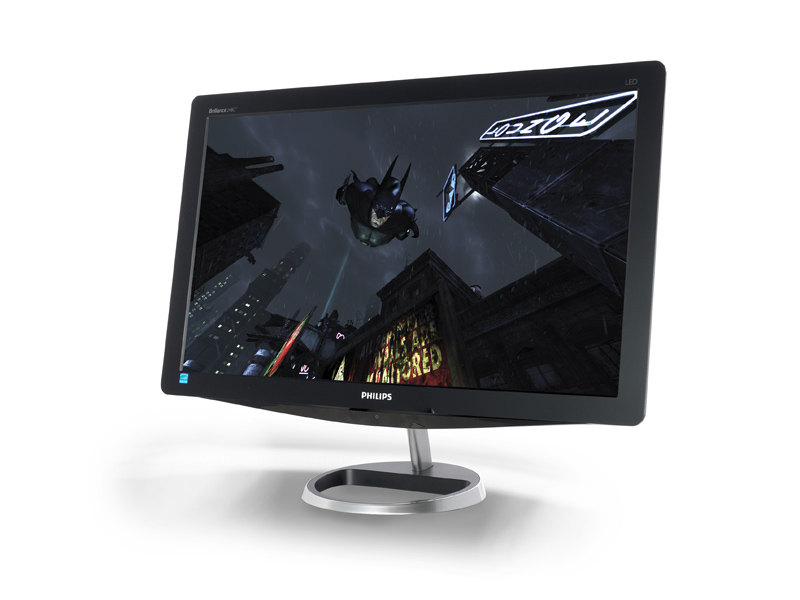TechRadar Verdict
Pros
- +
Good contrast
- +
Fast response times
- +
Backlighting
- +
Good build quality
Cons
- -
Slightly washed out colours
- -
Some inverse ghosting when using overdrive
Why you can trust TechRadar
There's a parallel universe where we're all millionaires, our PCs are hooked up to 30-inch LED-powered beasts with 120Hz refresh. Life is pretty sweet. Back in this universe, compromises must be made. Which is where the Philips Brilliance comes in.
It's the solution, or so Philips hopes, to the following crucial conundrum: just how much screen can you get for under £200? The real answer begins with 24-inches or more accurately 23.6-inches of corner to corner screen diagonal. Next up is 1,920 x 1,080 pixels. It's the full HD grid, then.
Finally, and rather predictably, you get TN panel technology. More on that in a moment. Because one thing you might not expect to get at this price point is a really classy chassis and stand. But that's precisely what Philips has come up with.
Granted, the stand is limited to tilt-only adjustment. That aside, it's a remarkable high quality effort which leverages cast aluminium for the base and both looks and feels positively pukka.
Does this improve the image quality? No. Does it make you feel better about your purchase? Definitely. All Philips therefore needs to do is deliver half decent image quality in the TN idiom and we will have ourselves a deal.
Steady scorer
Weighing in on the positive side of the ledger are good black levels and contrast. Panel backlighting is another strong point with very little unwanted bleed at the edges. As TN screens go, the viewing angles are impressive, too, even if the Lagom test suite proves they fall well short of the best IPS and PVA panels.
We've no particular bones to pick with the response performance, either. Philips offers two switchable modes. The Smart Response mode clearly involves pixel overdrive and does introduce a little inverse ghosting. But it also delivers super-quick response and, more to the point, it's your choice – you can always switch it off.
Sign up for breaking news, reviews, opinion, top tech deals, and more.
If that's the good news the bad is that the Brilliance will never let you forget your virtual world of desktop computing is tinged by TN. The give away involves slightly thin and watery colours. This screen simply isn't as saturated, vibrant or pleasing as more expensive panels.
It's still a great gaming panel thanks to the speed. And we have to admit that 1080p video looks very fine. But you will notice the lack of depth and vibrancy on the desktop. If none of that sounds like a deal breaker, there is one further snag. Philips has seen fit to limit video inputs to dual-HDMI and a single VGA port. Problem is, HDMI can be problematical, especially with AMD graphics cards. Be warned.
Follow TechRadar Reviews on Twitter: http://twitter.com/techradarreview
Technology and cars. Increasingly the twain shall meet. Which is handy, because Jeremy (Twitter) is addicted to both. Long-time tech journalist, former editor of iCar magazine and incumbent car guru for T3 magazine, Jeremy reckons in-car technology is about to go thermonuclear. No, not exploding cars. That would be silly. And dangerous. But rather an explosive period of unprecedented innovation. Enjoy the ride.
